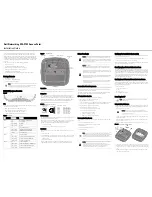
Page 62 of 130
Wire is relatively cheap. Opening walls is expensive.
As a result, it is often best to pull more wire than will immediately be required. This provides the capacity and
flexibility for the future needs of the ho
me.
Figure 69: Wiring Standards
1.10 Reviewing Different types of Order
Now that we’ve covered the components required for installing residential service, we’ll move along to the
types of orders you’ll be working with. But before we do that, to interpret orders correctly, you need to
understand the following:
Class of service codes
Local number portability
Class of service codes
Various services are offered to customers, but the basic ones are residential and business.
Residential Service is primarily used for normal household, domestic and family purposes. This includes non-
profit group homes. Home-based business customers can also have Residential Service as long as the account
is not in a business name, the service location is a private residence and the company name is not advertised
in the white or yellow pages.
Business Service is used for commercial, industrial, professional, institutional, vocational, governmental,
charitable or any other purpose other than that covered by Residential Service.
Common Class of Service codes include:
1. R – Residential Service
2. B – Business Service (Individual & Multiline) not terminating on a key system or PABX (Private Area Branch
Exchange)
3. BK – Business Service (Individual & Multiline) terminating on a key system, regardless of supplier
4. PX – Business Service (Individual & Multiline) terminating on a PABX, regardless of supplier
Local number portability
















































